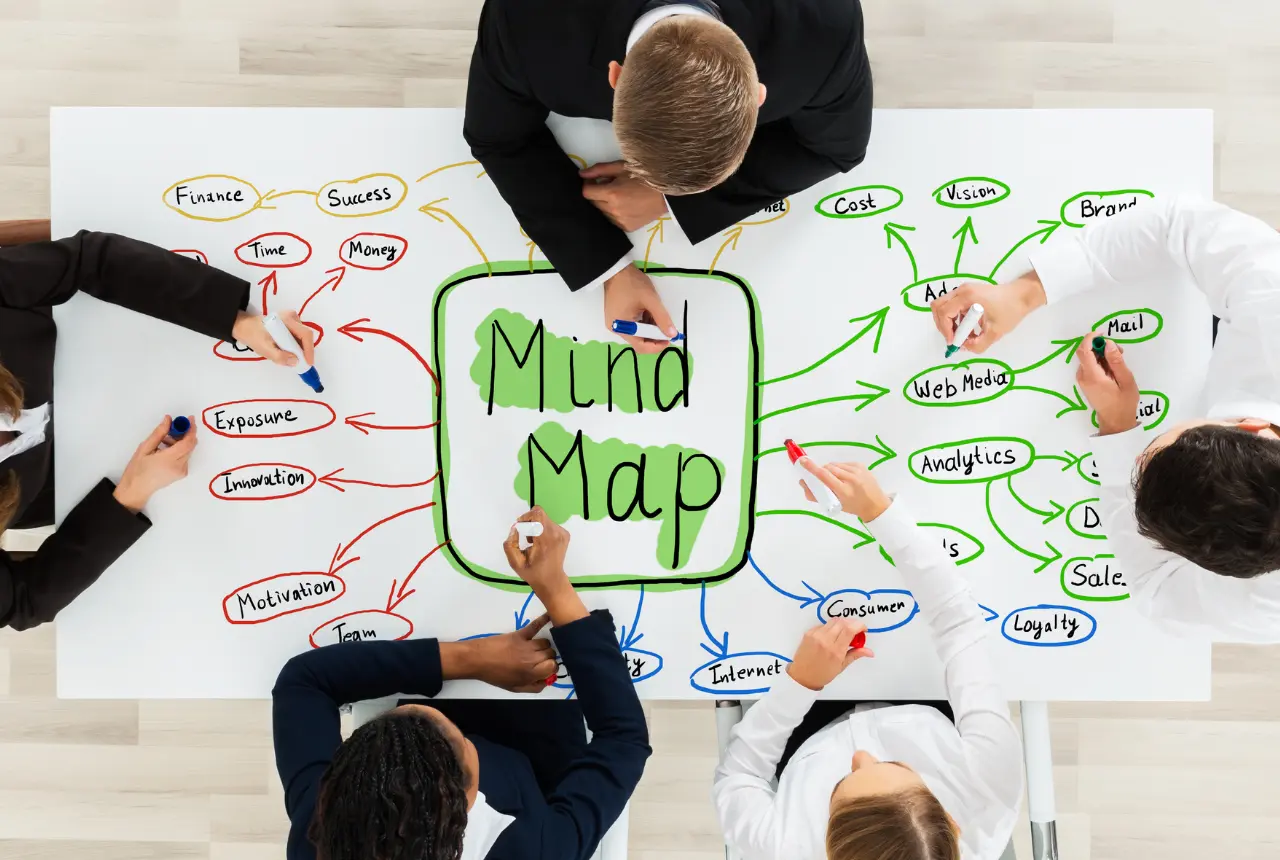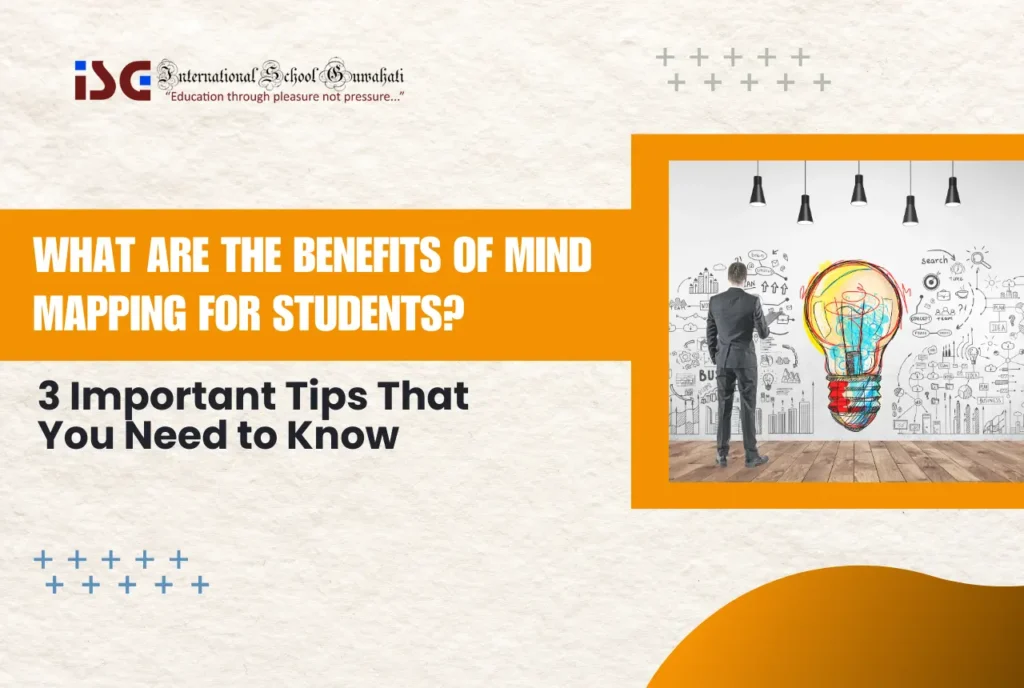![]()
In today’s information-rich world, there are many benefits of mind mapping for students.As they face the challenge of effectively absorbing and retaining knowledge. Traditional learning methods may not always cater to individual learning styles, leading to difficulties in comprehension and memory recall.
This is where mind mapping emerges as a powerful tool, offering a unique and engaging approach to learning. This post delves into the benefits of mind mapping for students, exploring its numerous advantages and providing practical tips for incorporating this valuable technique into your learning journey.
II. Demystifying Mind Mapping

Imagine a dynamic visual representation of your thoughts, radiating outwards from a central idea. That’s essentially what mind mapping techniques for students are! Unlike linear note-taking, which often feels restrictive, mind maps allow you to branch out freely, capturing ideas and connections in a non-hierarchical way.
The core of a mind map is the central topic, placed at the center. From there, branches extend outwards, representing key concepts related to the main idea. Each branch can further branch out, creating a web of interconnected information. To enhance clarity and memory recall, mind maps incorporate visual elements like images, colors, and symbols.
Students can leverage different mind mapping techniques depending on their needs. Spider maps are ideal for brainstorming ideas, while concept maps help visualize relationships between concepts. Cluster diagrams are useful for organizing information around a central theme.
Fortunately, creating mind maps is easier than ever with numerous mind mapping software and apps available. Popular options include XMind, Coggle, and Miro, each offering user-friendly interfaces and features specifically designed for students.
III. These Are The Benefits of Mind Mapping for Students

Mind mapping isn’t just a fancy note-taking technique; it’s a powerful tool that can revolutionize the way students learn and process information. By harnessing the brain’s natural ability to connect ideas visually, mind maps offer a plethora of benefits, enhancing information processing, improving study habits, and fostering creativity. Let’s delve deeper into these advantages and explore how students can unlock their full potential with mind mapping.
1. Enhanced Information Processing and Memory:
Traditional linear note-taking often presents information in a fragmented manner, making it difficult to grasp the bigger picture and establish connections between concepts. Mind maps, however, activate both the left and right hemispheres of the brain, promoting a more holistic understanding of the subject matter. The visual layout, with its central topic radiating outwards into interconnected branches, allows students to see the relationships between ideas and how they fit into the overall framework.
Research backs this claim. A study published in the journal “Applied Cognitive Psychology” found that students using mind maps for studying a biology lesson showed significantly better recall and test scores compared to those using traditional note-taking methods.
Practical Examples:
- History: Create a mind map for a historical period, with the central topic being the key event. Branches can represent causes, consequences, important figures, and their contributions.
- Science: Use a mind map to visualize the different parts of the human body, with each branch detailing functions and interconnected systems.
- Literature: Analyze a literary work by placing the central theme at the core and branching out with characters, plot points, symbolism, and critical interpretations.
2. Improved Study Habits and Organization:
Feeling overwhelmed by complex topics and struggling to prioritize information? Mind maps come to the rescue! By allowing students to break down concepts into manageable chunks and visually represent their relationships, they become powerful tools for organization and effective studying.
Mind maps can be invaluable for creating study guides and revision plans. Key concepts can be highlighted as branches, with further details and relevant notes attached. This visual representation aids in identifying knowledge gaps and facilitates focused revision. Additionally, mind maps can be used to prepare for presentations, ensuring a clear and logical flow of information.
Practical Tips:
- Start with a clear central topic. This could be a chapter title, a historical event, or a scientific concept.
- Use keywords and short phrases. Avoid lengthy sentences and focus on capturing the essence of each idea.
- Incorporate visuals. Images, colors, and symbols can enhance memory recall and make the mind map more engaging.
- Review and update your mind maps regularly. This reinforces learning and helps identify areas needing further revision.
3. Fostering Creativity and Critical Thinking:
The non-linear and visual nature of mind maps creates a fertile ground for creative exploration and critical thinking. Unlike linear note-taking, which restricts brainstorming and idea generation, mind maps encourage students to think outside the box and explore diverse perspectives.
Imagine using a mind map for creative writing. Start with the central theme of your story, and let your imagination branch out with character ideas, plot twists, potential conflicts, and setting details. This visual exploration can spark new ideas and lead to a more engaging narrative.
Beyond individual brainstorming, mind maps can be powerful tools for collaborative learning. In group projects, students can use mind maps to collectively generate ideas, solve problems, and develop innovative solutions. The visual representation fosters discussion, encourages diverse perspectives, and helps identify connections that might otherwise be missed.
Overcoming Potential Barriers and Utilizing Mind Mapping Effectively

While mind mapping offers numerous benefits, some students may initially find it challenging due to unfamiliarity or lack of practice. However, with a few practical steps, anyone can overcome these hurdles and unlock the full potential of this powerful tool.
Start simple: Begin with basic mind maps focusing on single topics or concepts. As your comfort level increases, gradually introduce complexity by adding more branches and sub-branches.
Explore different techniques: Experiment with various mind mapping methods, such as radial, cluster, or tree structures. Additionally, consider trying different mind mapping software to find one that best suits your learning style and preferences.
Visualize and colorize: Enhance memorability by incorporating visuals and colors into your mind maps. Use images, icons, or diagrams to represent key ideas, and employ color coding to highlight important information or connections.
Seek support: Don’t hesitate to seek help from teachers, peers, or online tutorials if you encounter difficulties. These resources can provide valuable guidance and answer specific questions you might have.
Consistency is key: Remember, consistent practice is crucial for maximizing the benefits of mind mapping. Integrate it regularly into your study routine, whether for brainstorming, note taking, or revising existing material. By doing so, you’ll transform mind maps from a novel tool into a powerful learning asset.
Mind Mapping – A Learning Revolution for Students
Mind mapping empowers students by fostering deeper understanding, enhancing memory retention, and promoting critical thinking skills. Its visual format and flexibility unlock creative approaches to learning, paving the way for a more engaging and effective academic journey. By embracing mind mapping, students are not just acquiring information but actively constructing knowledge, creating a true learning revolution for themselves.








